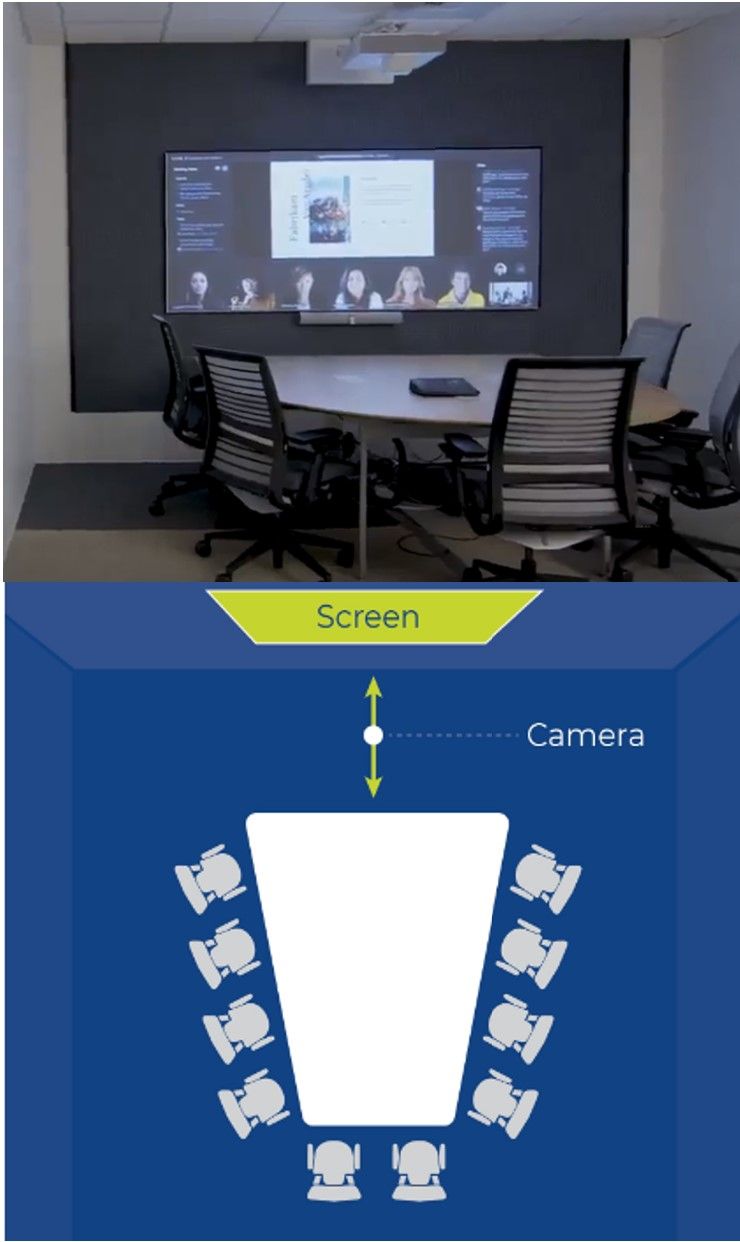Microsoft’s new Teams Room designs are shallow.
How do we adapt these for larger spaces, with more participants - all on the same table?

I’m working on some exciting projects based on Microsoft's new Enhanced Meeting Room (EMR) design, using Front Row super-sized screens with 21:9 aspect ratio. But the journey of how to apply the learnings from spaces shown at The Hive R&D facility to medium and larger spaces with more conventional needs and workflows is a journey still in its infancy.
The image below is a screen grab from ‘Meet The Hive’. Google it and watch their 4 minute video. Essential viewing. The thing to highlight here is the ‘guitar pick’ or ‘gumdrop’ shaped table. I’d describe this as making the first move into the main space of the room!
In conventional meeting spaces we’re programmed to think mostly in terms of rectangular tables - the so-called ‘bowling alley’ configuration.
In hybrid spaces we have one fundamental question to ask.
To what extent are we prepared to design the space to be welcoming to remote participants? Are we prepared to configure the space so all in-person participants can be seen by a single camera? Or do we design the room along conventional lines and trust that multiple next-gen cameras and AI will stitch together successful working composites?
Inter-organisation hybrid room systems might well prove good enough. If everyone in the organisation is used to a certain remote experience based on consistent camera use throughout the estate, then intuition says this may well be OK.
Intuition also says that because next-gen VC cameras can do some very fancy tricks, those fancy abilities will get knitted into many systems. Meaning there’s a risk in-person users will have to get resigned to experiencing remote meeting spaces in possibly joltingly different ways.
Working through the space design carefully improves in-person and remote experience. It helps organisations self-present to a higher standard. It means you use the technology to add to the experience - and not to fix issues thrown up by the room configuration.
There are two published papers which unpack - ‘MTRs - The Bigger Picture’ details the holistic practices and disciplines - and takes a deep dive into MTR displays, especially Front Row. The ‘MTR Quick Guide’ is the Visual Displays guide to displays.

Posted: 12th October 2022